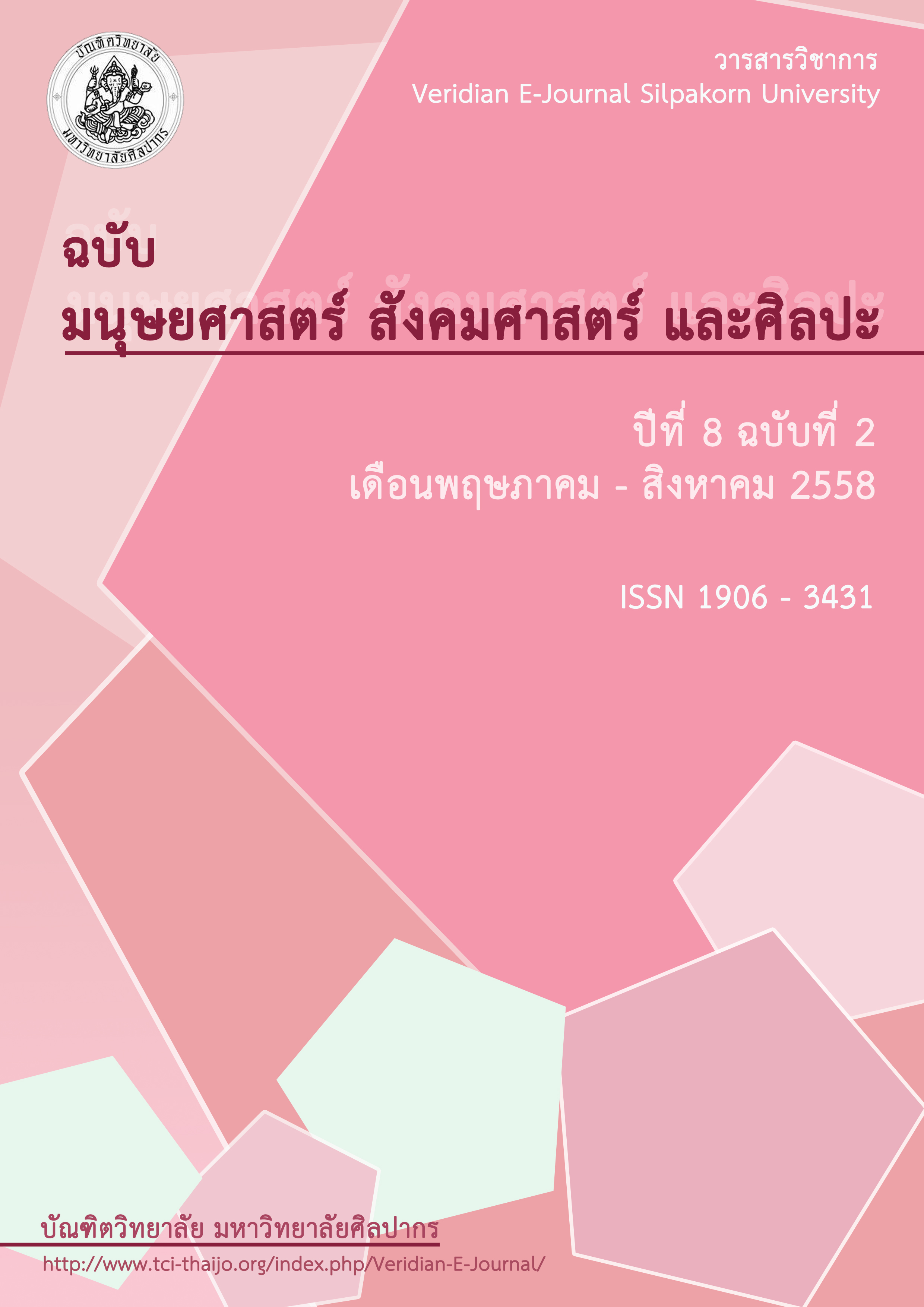การนำนโยบายการจัดตั้งศูนย์ปรองดองสมานฉันท์เพื่อการปฏิรูปไปปฏิบัติของจังหวัดนครปฐม
Main Article Content
บทคัดย่อ
บทคัดย่อ
การวิจัยในครั้งนี้มีวัตถุประสงค์ (1) เพื่อศึกษาปัจจัยเชิงกระบวนการในการนำนโยบายการจัดตั้งศูนย์ปรองดองสมานฉันท์เพื่อการปฏิรูปไปปฏิบัติ (2) เพื่อศึกษาผลสำเร็จของการนำนโยบายการจัดตั้งศูนย์ปรองดองสมานฉันท์เพื่อการปฏิรูปไปปฏิบัติ (3) เพื่อศึกษาความสัมพันธ์ระหว่างปัจจัยเชิงกระบวนการกับผลสำเร็จของการนำนโยบายการจัดตั้งศูนย์ปรองดองสมานฉันท์เพื่อการปฏิรูปไปปฏิบัติ (4) เพื่อศึกษาปัจจัยเชิงกระบวนการ ที่สามารถทำนายผลสำเร็จของการนำนโยบายการจัดตั้งศูนย์ปรองดองสมานฉันท์เพื่อการปฏิรูปไปปฏิบัติ ประชากรในการศึกษา คือ ผู้บริหารองค์กรปกครองส่วนท้องถิ่น ของจังหวัดนครปฐม จำนวน 353 คน เครื่องมือที่ใช้เป็นแบบสอบถาม ที่ผู้วิจัยสร้างขึ้นเอง ซึ่งหาค่าความเชื่อมั่นได้เท่ากับ .849 สถิติที่ใช้ในการวิเคราะห์ข้อมูล ได้แก่ ค่าร้อยละ ค่าเฉลี่ย ส่วนเบี่ยงเบนมาตรฐาน ค่าสัมประสิทธิ์สหสัมพันธ์เพียร์สันและการวิเคราะห์การถดถอย โดยมีค่านัยสำคัญทางสถิติที่ระดับ .05
ผลการวิจัยพบว่า (1)ปัจจัยเชิงกระบวนการในการนำนโยบายการจัดตั้งศูนย์ปรองดองสมานฉันท์เพื่อการปฏิรูปไปปฏิบัติ อยู่ในระดับมาก โดยมีปัจจัยเชิงกระบวนการในด้านวัตถุประสงค์และมาตรฐานนโยบายมีค่าเฉลี่ยสูงที่สุด(2)ผลสำเร็จของการนำนโยบายการจัดตั้งศูนย์ปรองดองสมานฉันท์เพื่อการปฏิรูปไปปฏิบัติ อยู่ในระดับปานกลาง จากผลสำเร็จในการจัดตั้งศูนย์ปรองดองสมานฉันท์พบว่าด้านการจัดตั้งศูนย์ปรองดองสมานฉันท์ระดับท้องถิ่นมีค่าเฉลี่ยสูดที่สุด (3) ความสัมพันธ์ระหว่างปัจจัยเชิงกระบวนการกับผลสำเร็จของการนำนโยบายการจัดตั้งศูนย์ปรองดองสมานฉันท์เพื่อการปฏิรูปไปปฏิบัติอยู่ในระดับต่ำมาก และ (4) ปัจจัยเชิงกระบวนการในการนำนโยบายการจัดตั้งศูนย์ปรองดองสมานฉันท์เพื่อการปฏิรูปไปปฏิบัติ ที่สามารถทำนายผลสำเร็จของการนำนโยบายการจัดตั้งศูนย์ปรองดองสมานฉันท์เพื่อการปฏิรูปไปปฏิบัติ มีเพียงตัวแปรเดียวคือ ด้านทรัพยากรนโยบาย ซึ่งสามารถทำนายผลสำเร็จในการนำนโยบายไปปฏิบัติได้เพียง ร้อยละ 4.7 เท่านั้น
คำสำคัญ: นโยบาย, ศูนย์ปรองดอง, การปฏิรูป
Abstract
The objectives of this study were 1) to investigate the process factors that influenced the implementation of the reconciliation center for reform in Nakhon Pathom Province, 2) to investigate the success in the implementation of the reconciliation center for reform in Nakhon Pathom Province, 3) to investigate the relationship between the process factors and the success in implementing the reconciliation center for reform in Nakhon Pathom Province, and 4) to investigate the process factors which could predict the success in the implementation of the reconciliation center for reform in Nakhon Pathom Province. The samples used in this study consisted of 353 local administrators in Nakhon Pathom Province. The data were collected by questionnaires with Cronbach’s alpha coefficient of .849. The statistics used to analyze the data were percentage, means, standard deviation, Pearson product moment correlation coefficient and linear simple regression with the level of statistical significance at .05.
center for reform was found the highest 3) The process factors positively and significantly correlated with the success in the implementation of the reconciliation center for reform in Nakhon Pathom Province policy at a very low level at .01 level of statistical significance. And 4) the results of the multiple regression showed that overall, the policy resource was the only variable which could predict the success in the implementation of the reconciliation center for reform policy at 4.7%.

